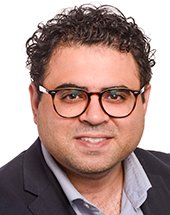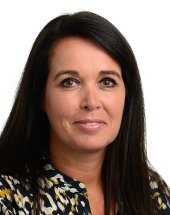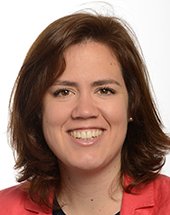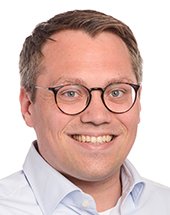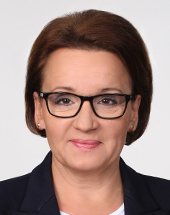Meeting Summary · 01 Mar 2023 · Establishing a Union certification framework for carbon removals · Source:
OPP Meeting Summary: EP ENVI Committee - Establishing a Union certification framework for carbon removals (1 March 2023)
A summary of the presentation and subsequent debate is available.
Christian Holzleitner, Head of Unit, Low Carbon Solutions (III): Land Economy & Carbon Removals (CLIMA.C.3)
- view the presentation.
- to reach climate neutrality in 2050, the EU needed to rapidly and significantly reduce its emissions, however, the EU would still be left with a certain amount of emissions that it would not be able to reduce;
- current estimates were of about 400-500 million tons;
- the EU must therefore also scale up carbon removals, i.e. the EU’s capability to “suck CO2 out of the air”;
- this scale-up must be done in 2035-2040;
- carbon removals were not for now, as they were currently too expensive and still require better understanding;
- the EU should nevertheless prepare itself for it;
- there were three options:
- storage into geological reservoirs, so permanent storage for several centuries;
- the CO2 was taken out from the atmosphere (Direct Air Capture with CCS) or from bioenergy (Carbon Capture with CCS);
- storage in soils and forests;
- a lot of these activities were good for the climate and biodiversity, such as the rewetting of peatlands or agro-forestry;
- this was “the big advantage” of carbon farming;
- however, storage in soils and forests was not permanent and there was a risk of re-emissions;
- moreover, currently, a lot of EU soils were emitting carbon rather than storing it;
- it was important to manage that risk;
- storage in products, such as in construction materials in which carbon could be kept for several decades and maybe even more than a century;
- towards 2050, the EU would likely need all these solutions;
- it was now about starting up these activities, as the EU was not yet ready for the scale-up;
- concerning carbon farming, there were an increasing number of pilot projects all across the EU;
- some of them, which offered both climate and biodiversity benefits, get carbon prices in the area of 50 to 100 euros;
- this was a good price, comparable to the current EU ETS price;
- realistically, this could increase foresters' and farmers’ incomes by maybe 10-20%, so this was not a “bonanza”;
- scaling up carbon farming and enhancing the management of soils and forests all across the EU required the monitoring, reporting and verification of removals;
- farmers should be equipped with the knowledge of the carbon balance and they must take ownership of their carbon balance;
- they knew best their soils and forests, and they must be advised on how to do this best;
- it was first and foremost about credible monitoring, reporting and verification;
- this was what the proposal was about;
- this was a necessary condition, irrespective of how carbon farming should be financed in the future;
- he acknowledged that there were different views on how it should be financed and whether it should be done with public or private money;
- concerning industrial carbon removal, permanent storage, the EU was currently financing, with the revenues of the EU ETS and the Innovation Fund, a district heating plant in Stockholm that ran on biomass residues;
- the idea was to capture the CO2 to store it under the North Sea;
- this must be scaled up significantly;
- the cost averaged 150-200 euros per ton of CO2;
- in comparison, the cost with Direct Air Capture (DAC) averaged 500-1000 euros per ton;
- the next few years would see pilot projects, but the EU was far away from significant scale-up;
- the Commission was proposing a tool for the monitoring, reporting and verification of carbon removals, “nothing more”;
- in the framework itself, the Commission sat out QU.A.L.ITY criteria, relevant to all, including public authorities and public investors, interested in financing high-quality carbon removals;
- they aimed to provide reliable quantification of the net climate benefit, the right incentive that additional carbon removals were generated and that the carbon was stored for a maximum period of time, and also that it was done in the most sustainable way and in the best case with positive co-benefits for biodiversity or other environmental goals;
- based on the QU.A.L.ITY criteria, the Commission together with an expert group would develop the specific methodologies;
- this work would be highly technical;
- the Commission had some experience from the Innovation Fund;
- concerning the incentivisation of long-term storage, there were the rules of the Carbon Capture and Storage (CCS) Directive;
- the Commission could “quite quickly” develop the methodology;
- concerning carbon farming, the Commission should probably look first to those activities methodologies that had a large benefit for climate and biodiversity, such as agroforestry;
- this should be done in a transparent manner, so that such certificates be only valid as long as the farmer or the forester took over the liability of keeping the carbon stored and the obligation to monitor this for, for example, 20-30 years;
- after that period, if the activity stopped, the certificate would lose its validity;
- such short-term carbon storage could never fully offset an emission and could not be used for such a claim;
- based on these methodologies, and once the Commission was happy about the quality, a delegated act would be adopted and it would go into the certification;
- the Commission would rely on tested approaches, like the certification of organic farming and sustainable bioenergy under the Renewable Energy Directive (RED);
- the most important feature in that regard was an independent third-party verification to provide credibility;
- the result of that certification would be a very detailed information sheet;
- the certificate would provide information on the type of carbon removal activities, how much additional carbon removals, how many total carbon removals, the impact on sustainability, etc;
- the Commission hoped that this certificate would facilitate the financing of carbon removals for both public authorities and private investors;
- on the rationale behind the proposal of voluntary certification and the Commission’s expectations:
- the Commission believed that its proposal was a no-regret option as it was about the tool for the monitoring, reporting and verification of carbon removals;
- this was a necessary condition regardless of how the scale-up of carbon removals would be financed after 2030;
- the Commission also hoped that the certificates would facilitate the financing of carbon removals for public and private investors that already now wished to go ahead;
- on the public side, he mentioned the Innovation Fund, the new State Aid guidelines on agriculture and forestry specific to carbon farming;
- the review of the CAP strategic plans showed that Member States (MS) were increasingly interested in putting additional state aid into agriculture and forestry;
- for private companies, such as the food sector, a food processor that wanted to show its scope 3 emissions (emissions and removals that came from the purchase of goods) could use the certificates to demonstrate their additional efforts in investing in high-quality carbon removals;
- this was linked to the sustainability reporting standards on climate and the green claims;
- he emphasised that the Commission’s proposal was a first step and that the biggest decisions would be taken at a later stage;
- he noted that co-legislators, within the Fit for 55 proposals, had laid out a roadmap on the next stepping stones in discussing the inclusion of carbon removals into the EU’s climate policy;
- there would soon be discussions about 2040 climate targets, and he believed that one of the main issues that would be discussed in that context would be the extent to which carbon removals should be included in these targets;
- he recalled that co-legislators asked the Commission in Article 30 of the new EU ETS Directive to assess the inclusion of permanent storage in the ETS for the 2026 report;
- the review of the LULUCF Regulation would also require an assessment of carbon farming and carbon storage products;
- the Commission hoped that this proposal on the voluntary certification of carbon removals in the EU could help better inform these bigger policy decisions.
Rapporteur Lídia Pereira (EPP, Portugal)
- she welcomed the proposal and the intention of introducing rules and procedures in a sector that was in need of guidance;
- it was important to keep in mind that removals should not distract the EU from the most important thing: reducing CO2 emissions;
- carbon removals must be additional to reduction;
- the EU nonetheless needed carbon removals;
- she underlined the efforts made by the Commission in this proposal in ensuring high standards in carbon removals to avoid the frequent current occurrences of greenwashing;
- nonetheless, she believed that there was still some room for improvement;
- as rapporteur, she would work with her colleagues to find a smart, collaborative and constructive approach to carbon removals in the Parliament's position;
- she wished to point out some aspects of the proposal that she considered not very clear;
- the kind of requirements that products would need to fulfil in order to be certified and whether it would be a list of products, and if so, how would the update of the list work;
- the minimum requirements for certification methodologies;
- concerning carbon farming, how did the proposal integrate and kept coherence with the LULUCF, what was the link between the proposal and the LULUCF removals targets;
- whether the certification framework needed to harmonise the certification of removals under the LULUCF or would there be a separate certification and/or methodology under LULUCF;
- how the baseline should be updated;
- in terms of the additionality, it seemed as if projects supported through EU funds could in any case not be considered additional from the financial additionality viewpoint since the project would have taken place without the certification;
- she wondered whether this was the Commission’s intention;
- how to distinguish between different carbon uptakes so that the difference in storage time was clear;
- how would the temporary certification work and whether it would be possible to re-certificate and, if that was the case, how;
- in relation to monitoring, reporting and verification, she wondered how certain differences between regions and MS concerning heterogeneous data collected be sorted.
Interventions from Shadow Rapporteurs
Mohammed Chahim (S&D, Netherlands) on behalf of Tiemo Wölken (S&D, Germany)
- carbon removals were interesting technologies;
- the aim was not to have them as substitutes for emission reductions;
- they could nevertheless be interesting, especially when looking at Green Tech;
- however, there needed to be certain conditions for these carbon removals, how the market was organised and how it would be regulated to make sure that removals remain removals;
- another argument for it was that the EU would need negative emissions after 2030, 2040 or 2050, especially given that negative emissions could be a way to decrease temperature rise - hopefully before the tipping point would be reached;
- Tiemo Wölken (S&D, Germany) would like to share three elements;
- removals in no way should interfere with the reduction of emissions;
- it could not be substitution and should not be used as a way to greenwash emissions of emitters;
- any future market should be clearly regulated, transparent and comprehensible before entering into operation;
- it should have clear targets and clear rules so that green technologies have a base to further develop;
- no counting of removals that have a high risk of disintegration or where such disintegration was not monitorable;
- the EU should not over-calculate these removals, such as in cases where the extent to which they would be kept would be unknown;
- this regulation would have implications for decades, and the details had high relevance and long-lasting effects;
- the choices were “clearly political and should be defined through co-legislation”.
Emma Wiesner (RE, Sweden)
- the Renew Group welcomed the regulation;
- having just worked on the EU ETS emissions, the Parliament was now going into the next phase: the negative emissions and carbon removals;
- she believed that these went hand in hand;
- there were three worrying elements that would be the cornerstones for Renew and their amendments and three principles that would guide them: the details, the administration and the market;
- concerning the details, a distinction between removal and avoidance must be made;
- avoidance and removals could not be counted the same way;
- this was why they must separate the long-term permanent carbon removals from the carbon farming activities, which were much more uncertain and biogenic;
- from a liability perspective, it would be very complex for farmers and landowners and the same amount of evidence and burden of proof would not be the same;
- she asked the Commission why this separation between carbon farming activity and permanent removals was not made, if not with separate regulations at least within this regulation;
- she saw a risk that the Parliament would have similar discussions that they had on taxonomy, resulting from too many delegated acts and too few details on what would be considered a carbon removal in the regulation;
- they must be a bit more clear on what the Commission would be steering towards for these delegated acts;
- the regulation currently provided “a frame but there was no picture in it”;
- concerning the administration, she stressed that they should make this as easy as possible to use for landowners and forest owners;
- she asked the Commission to explain and elaborate on the logic behind the certification scheme;
- Renew saw a risk that this could become very complex administratively;
- there were bad examples, such as in France where the scheme was very expensive and experienced a heavy administrative burden;
- she wondered how could the certification be streamlined, more like an audit system for energy efficiency in which a person went to an auditor to get the approval and certification directly without integrating with the certification scheme;
- concerning the market, she asked the Commission to provide information on the market, the potential markets, whether it should be Effort Sharing Regulation (ESR) targets, whether it should be private or public market;
- there was a need to create more of a market structure for these because the system would face itself out if only the emitting sectors would have to pay, given that emissions would have to go down and thus the willingness to pay for credits would then go down;
- however, carbon removals needed to increase at the same time;
- the EU thus needed to create a market structure for this to work;
- the level of detail, the administration and its complexity, as well as the market perspectives, were three very important points to her and Renew.
Ville Niinistö (Greens/EFA, Finland)
- as rapporteur on LULUCF, he believed that these two files were linked;
- the regulation offered a great deal of potential for improved practices in farming and forestry;
- in forestry for example, they could expect that the incomes of forest owners could multiply if they would in the future also be paid for increasing carbon sinks and biodiversity on their land;
- this would offer them sustainable business alternatives to intensive forest management;
- this proposal entailed significant risks of derailing climate action if done wrong;
- the key question was thus correctly-directed incentives;
- going to net zero by 2050 would first and foremost require deep and sustained emission reductions;
- they mustn’t forget that and should not allow the need to increase removals as an excuse for emitting sectors to delay climate actions;
- they must first keep the carbon in the ground before thinking about how to absorb more of it from the atmosphere;
- this was the starting point;
- when the Intergovernmental Panel on Climate Change (IPCC) stated that carbon removals would be unavoidable to reach climate neutrality, it referred only to unavoidable emissions;
- current emissions were far from unavoidable;
- there were decades of “really serious” emission reduction work to be done that could not be postponed;
- this legislation would only address things that were beyond and above that;
- the first thing that must be done was to clarify what the certificates would be used for and clearly exclude the possibility to offset current emissions or to allow companies or products to claim climate neutrality when, in fact, their carbon footprint was still unsustainable and they had a serious carbon footprint;
- the intentions of the Commission in both this proposal and the Green claims proposal were conflicting and worrisome in this regard;
- they should not let offsetting its the way;
- companies could have good intentions, and the EU should allow a path for them to contribute financially to ecosystem restoration or to the transformation of the EU’s agricultural systems;
- however, these should be additional claims, not climate neutrality claims washing away emissions;
- they must be exact on the details;
- he warned that there would no longer be any incentives for companies to decrease their emissions as soon as they would be allowed to claim climate neutrality, and this would create a lock-in effect of emissions;
- as rapporteur on the LULUCF, he would like to stress the importance of MS doing public actions when it came to guiding public money, with CAP and other funding, to achieve LULUCF targets;
- this was the baseline, the minimum;
- the work they were doing now on carbon removals should be additional, not part of the LULUCF targets;
- this would be a separate discussion they needed to have on creating credible and additional markets for these privately funded programmes;
- otherwise, there was a significant risk of replacing public actions while continuing to allow public money to flood into bad practices that would actually only be bad for the sinks;
- all these questions must be tackled in this work;
- it was important to look at the permanence and additionality of the removals, both for national sinks and technological ones;
- he didn’t go into the technological ones, but there was also the same risk of continuing emissions by using them and they must ensure that this would not happen.
Catherine Griset (ID, France)
- the ID Group was surprised by the method chosen by the Commission;
- relying on a group of experts with a vague outline and on delegated acts with distant deadlines was tantamount to doing things the wrong way around;
- she wondered why the Commission had not come up with a ready-made proposal;
- another question concerned the articulation with European legislation;
- in addition to the normative overload that was emerging, she wondered if the Commission was not afraid of an overlap between the CAP and this new certification framework;
- she warned that the establishment of a new carbon market created a risk of land grabbing due to an attractive carbon price and therefore a change in agricultural practices;
- in this case, she wondered whether farmers would not be harmed;
- she questioned whether the EU could do anything outside the market and what the policy was for;
- regarding the purely technical aspects that would certainly increase the administrative and financial burden on farmers, she asked how to ensure that the additionality criterion did not disadvantage farmers who were already certified as sustainable and organic by other labels;
- she also asked how to verify the permanence of carbon storage in the soil and how to account for it;
- she mentioned that France was a pioneer of the low-carbon label, but that it was “a real gas factory” like this text;
- she also wondered what the real distribution of competencies between the Commission and the MS would be, particularly on the question of the control of certification systems.
Anna Zalewska (ECR, Poland)
- she pointed out that absorption of CO2 was extremely important, as it constituted actions to reduce emissions;
- on the funding, she remarked that EU citizens currently did not have enough money, and it was thus difficult for the ECR Group to conceive of a very expensive new system in addition to the “extremely expensive” EU ETS;
- she doubted that companies that were already struggling financially would be able to shift to CCS;
- they did not have enough money to do so and this was thus not a realistic system;
- a more honest and realistic approach would be to reduce EU ETS quotas if a company was to participate in CCS;
- this text did not have enough details;
- there were too many references to delegated acts;
- the EU was beginning the CCS experiment and placing it in farming, however, the EU must understand that farming was already trying to grapple with the CAP reform;
- she frequently discussed this with farmers and, from her discussions, she emphasised the need for training and awareness-raising, but not enough tools available to reach this objective;
- they must find a solution to best support farmers;
- for years, there had been an inexorable trend of farmers leaving the profession;
- this was only getting worse due to the war in Ukraine;
- this proposal also stated that there was a need to find a linkage between this policy and the reform of the CAP;
- the new CAP had a different approach: the financial means were limited and the situation was extremely challenging;
- she emphasised the need to have panels of experts that were cooperating with the Commission on a systematic basis;
- however, these experts should be monitored, as there were some cases of corruption, such as the recent one in the Parliament;
- there must therefore be controls in place.
Mick Wallace (The Left, Ireland)
- the Left would like to see more safeguards against potentially problematic use of the certificates;
- they believed that there should be a new chapter on the use of certificates, which should prohibit certain uses;
- carbon credits would be available in limited resources and should be a public good;
- the regulation should make explicit what removals could be used for and the role that they would play in the EU climate policy in the future;
- a lot of people generally opposed to market-based measures and offsets would be worried about this regulation and that it would actually encourage and further facilitate offsetting and lead to even further delays in reducing emissions;
- the Commission was doing two things with the proposal: it was making an attempt to regulate the existing offset market by certifying removals and it was also proposing what the Commission’s Communication on sustainable carbon cycles called a regulatory framework for a clear and transparent identification of the activities that unambiguously remove carbon from the atmosphere and that such as framework would be incredibly useful as it could facilitate a separate EU carbon removals targets;
- he asked the Commission to clarify how the certification framework could be used to facilitate future separate EU removal targets;
- according to Article 30 of the new EU ETS Directive, there would be a review of the role of permanent carbon removals in the EU ETS before 2026;
- he wondered how the carbon removal certification regulation would interact with the EU compliance framework, as well as how credits based on certifications were traded on the offset markets;
- he asked if the Commission thought that industries registered in the EU ETS compliance market should be able to buy carbon credits from the voluntary compliance market and if that would be a possible future use of the certification framework;
- Article 7 dealt with sustainability criteria for carbon removals, but certain practices covered by the proposal, especially in the forestry sector were harmful to biodiversity;
- this proposal stated that a carbon removal activity must have at least a neutral impact on biodiversity, but this would mean that these environmentally damaging activities currently happening would be permitted to continue and even be certified and financially rewarded;
- he asked the Commission whether an addition to Article 7 was needed on the need for land or biomass-based removals to ensure a positive contribution to the sustainability objectives beyond the current status quo;
- a big problem in the proposal was the “one-size-fits-all” carbon removal unit;
- the Commission would argue that certification methodologies proposed via delegated act in article 8 would separate out temporary removals such as carbon farming from permanent removals that lasted centuries but this distinction remained murky in the text as it was currently drafted.
Catch-the-eye
Peter Liese (EPP, Germany)
- he welcomed the positive spirit of the debate but noted a lot of hesitation and resistance against carbon removals outside the Committee, and he was afraid that these feelings would be reflected during the discussion;
- in the past, he sometimes supported Greens and S&D ideas that were not yet the majority in his political group;
- he recalled that the first time he was supported by his group was on the EU ETS for heating and road transport, but that there was some resistance from other groups;
- however, they found a good compromise and he hoped that this would also be the case with this proposal;
- those who believed that carbon removals should play only a minor role should consider that 57%, not 55%, would be achieved, thanks to increased ambitions in LULUCF carbon removals.
- they should also look at the time perspective, carbon removals would be needed in 20 years;
- many MS wished to be climate neutral before 2050 and he argued that they should improve their performance after reaching climate neutrality;
- he pointed out that photovoltaics were very expensive 20-25 years ago, similar to DAC today;
- making the technology a game changer in achieving the EU’s climate targets required them to be cheap;
- they should start working on the framework now to incentivize it, as doing so would make them cheap, allowing the EU to use them on a large scale in 20-25 years, when they would be "desperately" needed.
Pär Holmgren (Greens/EFA, Sweden)
- the EU was in a dilemma: emissions were not decreasing fast enough and would need some carbon removals;
- however, this must not delay climate actions;
- the EU must still fully focus on getting away from emissions;
- it was important to realise that there was a big difference between removals;
- short-term removals of carbon in forestry and agriculture could not be seen as permanent, depending on the definition of permanent;
- there were more high-tech industrial solutions that could grow in the future, but there were two major issues: the cost and the significant need for energy to produce these high-tech carbon removals;
- he wondered how they could ensure that the two carbon removal possibilities were not mixed and how to measure the energy efficiency of the more high-tech solutions.
Anja Hazekamp (The Left, Netherlands)
- the Parliament clearly stated that carbon farming could not be at the cost of animal welfare;
- she stressed that “none of this” could affect animal welfare;
- she asked if there were guarantees in the system and if the Commission could guarantee that green products such as biogas products would not fall under this system or that cutting rainforests for fodder would not be sustainable.
- these were animals that lived all their lives inside;
- none of this was sustainable;
- the best way to use farming to tackle climate problems was to move to plant-based food;
- the EU must produce more vegetables, fruit and grain for human consumption and less meat.
Christian Holzleitner, Head of Unit, Low Carbon Solutions (III): Land Economy & Carbon Removals (CLIMA.C.3)
- he shared the concerns expressed by MEPs, which showed that a lot remained to be learned;
- this was the “beginning of the journey” as it was about introducing a new policy field in climate that could be more important than the reduction of emissions by 2040 or 2050;
- the EU was not there yet, and needed to learn a lot;
- it should first focus on monitoring, reporting and verification;
- this was why the Commission gave a big role to the expert group over the next years so that the best methodologies could be developed and that would enable the EU to rely on all the initiatives in carbon farming;
- for example, there were good projects in the mission for healthy soils under Horizon;
- the Commission would work closely with them to get this expertise;
- developing these methodologies would be a dynamic process, especially for carbon farming;
- this was different than any other private certification schemes of carbon removals, as the Commission wanted to clearly differentiate permanent storage and temporary storage;
- how long a farmer or a forester committed to keeping the carbon in would be written on every certificate;
- as such, temporary claims would not be similar to permanent claims, and could not fully offset an emission;
- any suggestion on how to make it clearer in the proposal would be welcomed;
- concerning the coherence with LULUCF, he recalled that the Commission had insisted on better monitoring and reporting during the discussion on the revision of the LULUCF regulation and this was an extension of that discussion;
- they were now trying with the LULUCF and national inventories and all they understood there to pull it down to the individual level of the farm and the forest;
- as stated in the Communication on sustainable carbon cycles, the Commission wished that every farmer and forester knew their carbon balance by 2028;
- this was the main goal of the Commission;
- the EU must fully use the potential of earth observation and improve soil sampling;
- he believed that success in the next 5 years or by 2030 required a cost-competitive monitoring system;
- this was also the idea behind a standardised baseline, as a comprehensive database across Europe of all the different land types under different climate conditions, should enable the EU to easily calculate the average of carbon for a certain type of land;
- this would be a highly standardised baseline and this was where the EU should be going;
- having a robust and empirically-based baseline would address the costly additionality test by offering a system to farmers that would be easily implemented;
- carbon was in many cases a good indicator of biodiversity, and was an indicator that could be most easily measured;
- on how these temporary certificates would work, he explained that it would be a bit like organic farming:
- they must first get farmers interested in getting into it;
- a farmer might not be ready to commit to keeping the carbon in for 200 years, but maybe 10-15 years to start;
- and then one would hope that this interest would be constantly renewed;
- one of the first applications could be carbon farming, the measuring of carbon balance together with organic farming;
- there were all the infrastructure, verifiers and certifiers, and if they were ready to take on the measurement of carbon, this could be a “very good first action”, maybe combined with agroforestry;
- concerning questions regarding the relationship with the new CAP and what could the new climate policy look like, he stressed that there was a need for a good public debate, which would take time, and this was why the Commission was now proposing just to start with the monitoring, reporting and verification;
- there were a lot of big questions to set the right incentives for carbon removals;
- on animal welfare, he explained that the Commission’s proposal concerned the LULUCF scope, so soils and forests, not non-co2 emissions from livestock or from fertilisers;
- the discussion was about carbon removals and increasing the carbon stocked in soils and forests;
- the Commission was focusing on that because this was very challenging in terms of monitoring, reporting and verification.
Related Procedure(s)
See all
The simultaneous interpretation of debates provided by the EU institutions serves only to facilitate communication amongst the participants in the meeting. It does not constitute an authentic record of proceedings. One Policy Place uses these translations so this text is only a guide and should not be relied on as an official account of the meeting. Only the original speech or the revised written translation of that speech is authentic.
RELATED INFORMATION
This site uses cookies. By continuing to browse the site you are agreeing to our use of cookies. Find out more.
About us

